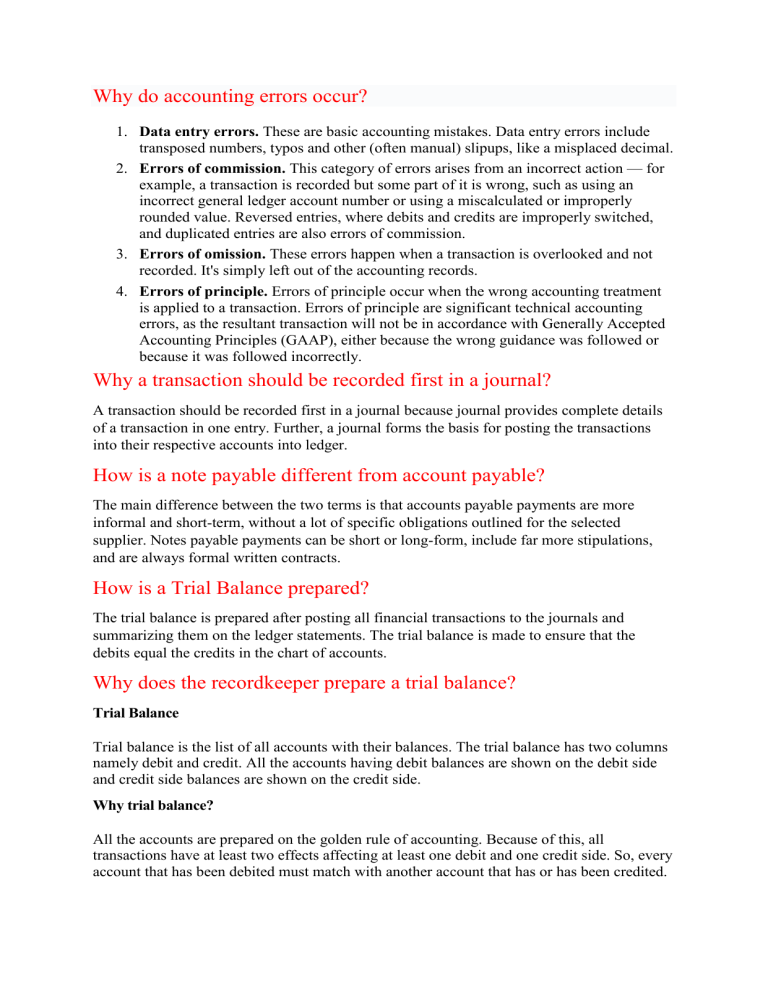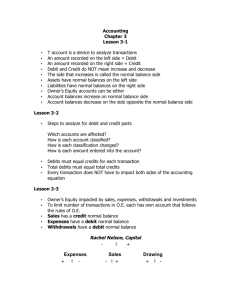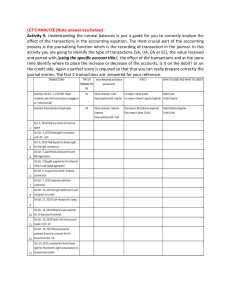
Why do accounting errors occur? 1. Data entry errors. These are basic accounting mistakes. Data entry errors include transposed numbers, typos and other (often manual) slipups, like a misplaced decimal. 2. Errors of commission. This category of errors arises from an incorrect action — for example, a transaction is recorded but some part of it is wrong, such as using an incorrect general ledger account number or using a miscalculated or improperly rounded value. Reversed entries, where debits and credits are improperly switched, and duplicated entries are also errors of commission. 3. Errors of omission. These errors happen when a transaction is overlooked and not recorded. It's simply left out of the accounting records. 4. Errors of principle. Errors of principle occur when the wrong accounting treatment is applied to a transaction. Errors of principle are significant technical accounting errors, as the resultant transaction will not be in accordance with Generally Accepted Accounting Principles (GAAP), either because the wrong guidance was followed or because it was followed incorrectly. Why a transaction should be recorded first in a journal? A transaction should be recorded first in a journal because journal provides complete details of a transaction in one entry. Further, a journal forms the basis for posting the transactions into their respective accounts into ledger. How is a note payable different from account payable? The main difference between the two terms is that accounts payable payments are more informal and short-term, without a lot of specific obligations outlined for the selected supplier. Notes payable payments can be short or long-form, include far more stipulations, and are always formal written contracts. How is a Trial Balance prepared? The trial balance is prepared after posting all financial transactions to the journals and summarizing them on the ledger statements. The trial balance is made to ensure that the debits equal the credits in the chart of accounts. Why does the recordkeeper prepare a trial balance? Trial Balance Trial balance is the list of all accounts with their balances. The trial balance has two columns namely debit and credit. All the accounts having debit balances are shown on the debit side and credit side balances are shown on the credit side. Why trial balance? All the accounts are prepared on the golden rule of accounting. Because of this, all transactions have at least two effects affecting at least one debit and one credit side. So, every account that has been debited must match with another account that has or has been credited. Thus all the amounts that have been debited must be matched with all the amounts that have been credited. Trial balance facilitates this level of cross-checking. In trial balance, all accounts having debit balances are listed in the debit column and the debit column is totaled. The same process is adopted for the credit column. At the end, the sum of the debit column of the trial balance would match up with the credit column.





